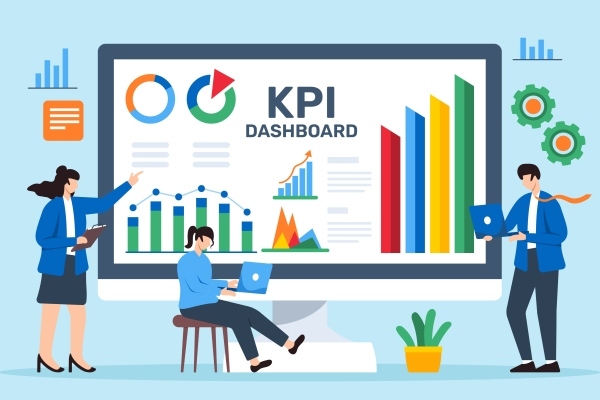
What is On-Page SEO?
Search engine optimisation can often be a difficult concept to grasp. It’s all about making your websites more attractive to all of the search robots that Google uses to search the web for new content. However, on-page SEO can be a little different to some traditional techniques like backlinking. While it still tries to appease Google’s search algorithms, it’s also focused on delivering a better experience for your audience.
In this comprehensive guide, we’re going to discuss all of the different elements of on-page SEO and help you understand the most important practices to develop and ranking factors to focus on.
What is on-page Search Engine Optimisation?
On-page SEO is sometimes known as on-site SEO. It refers to all of the elements that are actually on your web pages and how they can be optimised for search engines such as Google. There are many common SEO practices that are considered on-page SEO factors. This includes optimising your content, title tags, images, and even links.
The opposite to this is off-page SEO which is focused on optimisation that happens on other websites. For example, when another website links to your pages, that can improve your SEO but isn’t considered a factor that is on your own website, hence why it’s known as off-page SEO.
How Important is on-page SEO?
On-page SEO is incredibly important even in an age where off-site SEO has become a huge factor in your search rankings. In the past, most search engines developed their algorithms to search for specific keywords and phrases on websites. It would then rank pages based on the frequency and relevancy of those keywords. However, this system was very difficult to balance as it encouraged websites to develop black hat SEO techniques such as overloading websites with invisible keywords.
Thankfully, Google and most other search engines these days are much smarter with advanced algorithms that look at more than just keywords. However, that doesn’t mean the old method of keyword crawling isn’t used anymore. In reality, keywords still play a major role in your website’s visibility–the algorithms are just a lot smarter and you can’t fool Google by mashing together a few keywords.
Today, it’s difficult to determine how important on-page SEO is compared to off-page SEO. Google’s algorithms are advanced enough that we can’t tell you what to focus on first. However, what we can suggest is that no matter what kind of SEO techniques you prioritise, having a balance of different techniques is often the best approach. This is why on-page SEO should be mixed with off-page SEO and other strategies for the best results.
So without further ado, let’s take a look at some of the most important factors when it comes to on-page SEO.
How to SEO your Content

Content optimisation is arguably one of the biggest factors when it comes to on-page SEO.
Basic On-Page SEO
Perhaps the oldest and most reliable component of SEO is good keyword usage. Content optimisation was, for a long time, completely focused on the density of keywords. Nowadays, Google’s algorithms have become much smarter and will lower a website’s rank if they detect that keywords are being spammed without much thought.
These days, text optimisation is much more difficult to crack because Google’s algorithms are constantly changing, but there are a few general tips that are followed by everyone:
- Focus on clusters of keywords and combinations. Pick a keyword that you want to focus on, but make sure you also use keywords around that main subject to cover as much as you can for the entire topic.
- Make use of structural text elements. This includes paragraphs, bulleted lists, bolding and italicizing key elements, and also headings to create titles that break up your content.
- Use the concept of evergreen content to create content that generates value over a long period of time. This is usually content that is independent of the time period it was written in. This can mean content that relates to how a particular product is used instead of how popular the product is for that period of time.
- Consider the length of your posts. Google tends to value long-form content which means you have more opportunities to use keyword combinations and structural text elements to organise your content. Just make sure the content itself creates value for the viewer instead of being a page full of keywords and no real substance.
Text optimisation is perhaps one of the most important aspects of on-page SEO to focus on. While Google has definitely evolved its algorithms to account for more aspects of a website, content still reigns supreme and text optimisation alone will account for a huge portion of your success.
Media Optimisation
Search engines can’t really read and understand video content as easily as text content. However, there are still some very important concepts to understand when it comes to on-page SEO and media optimisation.
For example, if you’re making use of videos and audio on your website, then it’s a major help if you’re able to add a video or audio transcript. This makes your audio and video content more accessible, especially to mobile users who may have limited data. However, it can also make it easier for Google’s robots to crawl your website and relate the transcript to the video or audio. This means your media content will still get some SEO credit.
It’s important to remember that media should always be related to the page that it’s being posted on. You can’t rely on a video alone for on-page SEO–it always has to be related to the rest of the content on a page.
SEO for Page Titles and Metadata
Lastly, titles and meta descriptions are an extremely important component of on-page SEO that we can’t overlook. Whenever we enter a search into Google, we’re given loads of different results that are summarised into two things; titles and descriptions. The top part of a search result is the URL followed by the title of the web page. Below that is a brief summary of the page known as the meta description.
The meta description is something that you can personally enter. When Google’s robots reach your website, it searches for metadata such as the meta description and uses it in their search results. Even if they won’t be visible on your website itself, it’s still going to show up on search result pages and should be optimised with keywords to be more relevant.
Optimising your content is perhaps the most important component of on-page SEO, but there are also other factors that you should consider if you’re aiming for that coveted number one spot on a Google search results page.
Optimising On-Page Technical Elements

Also known as technical SEO, this is an area that helps ensure that your website is functioning correctly and that all of the backend elements are optimised for speed and usability. There are a number of different elements to focus on here.
Loading speed
In 2017, Google performed an analysis of 900,000 different landing pages and found some very interesting statistics. For example, the average mobile landing page took around 22 seconds to load. This might not sound like much at first, but over 50% of users leave pages that take longer than three seconds to load.
This shows us that users are extremely prone to leaving a page if it doesn’t load quickly enough. Desktop loading times were faster, but the average was still above the three seconds that most users wait before giving up. This is likely due to the fast-paced nature of mobile web browsing where users don’t want to wait too long for their content. Thankfully, there are a number of ways to optimise your page loading speeds.
- Removing heavy elements such as autoloading videos.
- Optimise your images by switching to a format with a smaller size such as PNG.
- Set up browser detection so that a lower resolution image loads when your site is viewed on mobile.
- Ensure that your website host isn’t the one causing the loading page bottlenecks.
- Examine your website’s source code to look for ways to optimise website performance.
These are just a few examples of how you can speed up website loading times. The biggest factor here will be autoloading elements such as large images, audio, and videos. However, it’s also important to make sure your host is capable of handling the load as well.

Mobile-friendly websites
Another element of technical SEO is ensuring that your website is mobile-friendly. This is an important on-page SEO consideration because your website is more likely to be listed on a mobile search if it has a responsive design. In short, the more mobile-friendly your website is, the more likely Google will recommend your website to mobile users.
On-Page SEO and Internal Linking
Internal links can actually make a huge difference in your on-page SEO performance. Internal linking can actually help Google’s robots navigate your website more efficiently and also make it more accessible for real users. This is one of the elements that affect both the algorithm that makes your website rank higher but also improves the user experience for real people.
Internal links
An internal link is anything that helps people navigate around your website. For example, an internal link could go from your home page to the about page, or it could go from a product page to a blog post that explains how it works. Internal linking should be used together with keywords to create efficient on-page SEO that helps you rank higher.
URL structures
An important consideration for your web pages is what you name the URLs. Every web page has a URL and it needs to be relevant to the content on the page. Long URLs can cause problems at times, so it’s best to condense them down to important keywords that may be searched by users. In addition, logical relations between links can also be important to help create a more streamlined website design.
Optimising your Design
A major component of any website today is the design. Websites need to be eye-catching, but they can’t be too distracting and they shouldn’t be difficult to look at. In the past, websites used a lot of different technologies to make their websites more interesting and unique. For example, a Flash-based menu and navigation elements were used, and unique graphics could be used for buttons and transitions between pages. Unfortunately, many of these elements are poorly optimised and design has become much more minimal to create a more comfortable and accessible user experience.
Here are a couple of design considerations to keep in mind when it comes to on-page SEO.
Speeding up your website
We’ve mentioned this before, but it’s extremely important to optimise the speed of your website by taking a closer look at your design elements. Any element that takes a long time to load should be removed in favour of a more efficient option. This also includes removing any JavaScript elements that can slow down loading and also make it difficult for search engines to crawl your website.
Clean and simple navigation
Great navigation usually means reducing the number of clicks a user makes before they can reach their destination. Streamlining navigation like this makes it extremely easy for users to find what they’re looking for, and this in turn makes it easy for website robots to crawl your website. As another advantage, it also makes designing your website much easier because you’re less likely to create a labyrinth of links that confuses not only your visitors but also yourself.
Conclusion
On-page SEO involves many different components. It’s extremely important that you understand all of the different elements that make up on-page SEO and you should be aware of how they affect your overall search ranking. By optimising your website bit by bit, you’ll find yourself climbing up the rankings faster than you’d expect.





